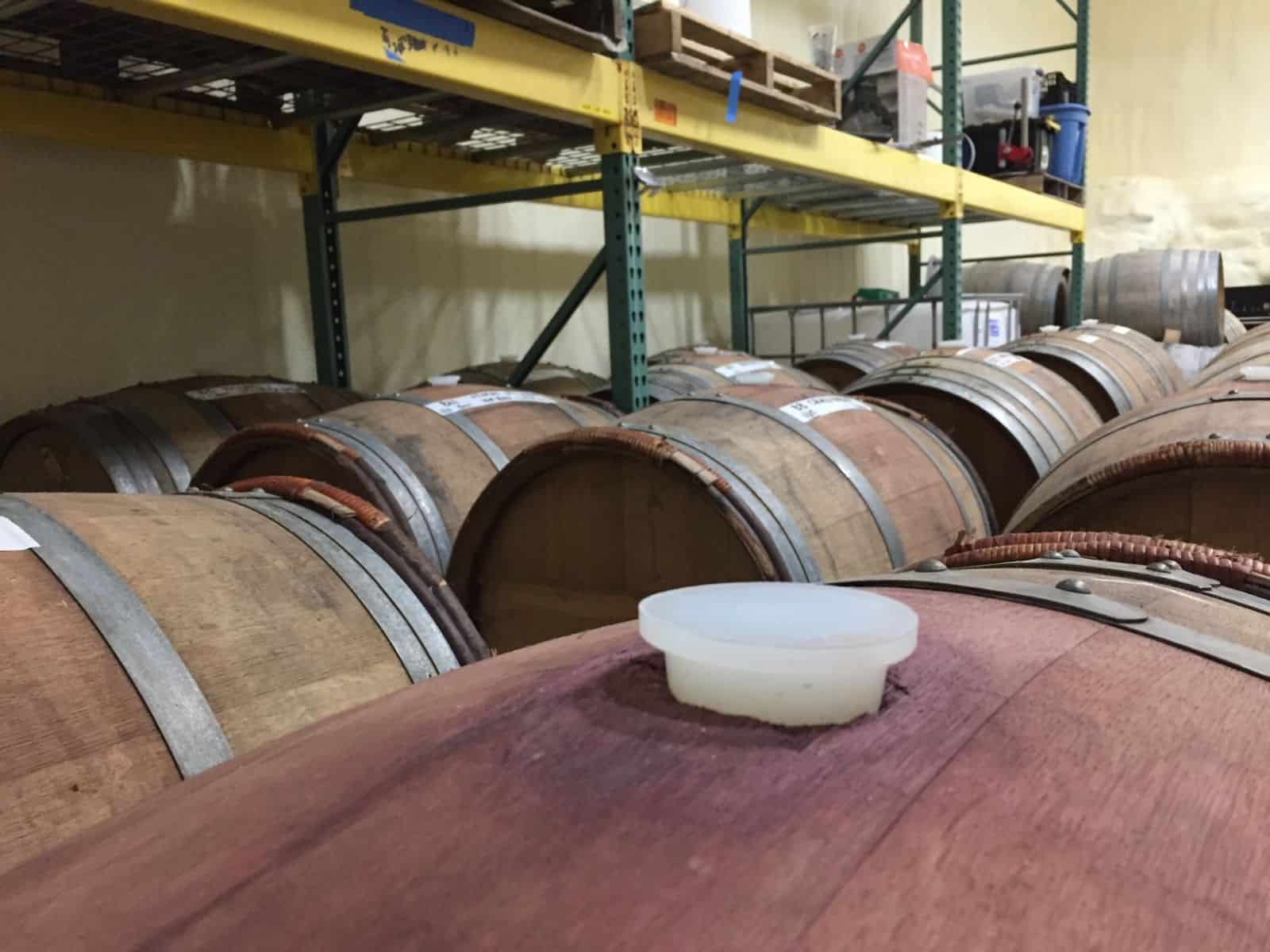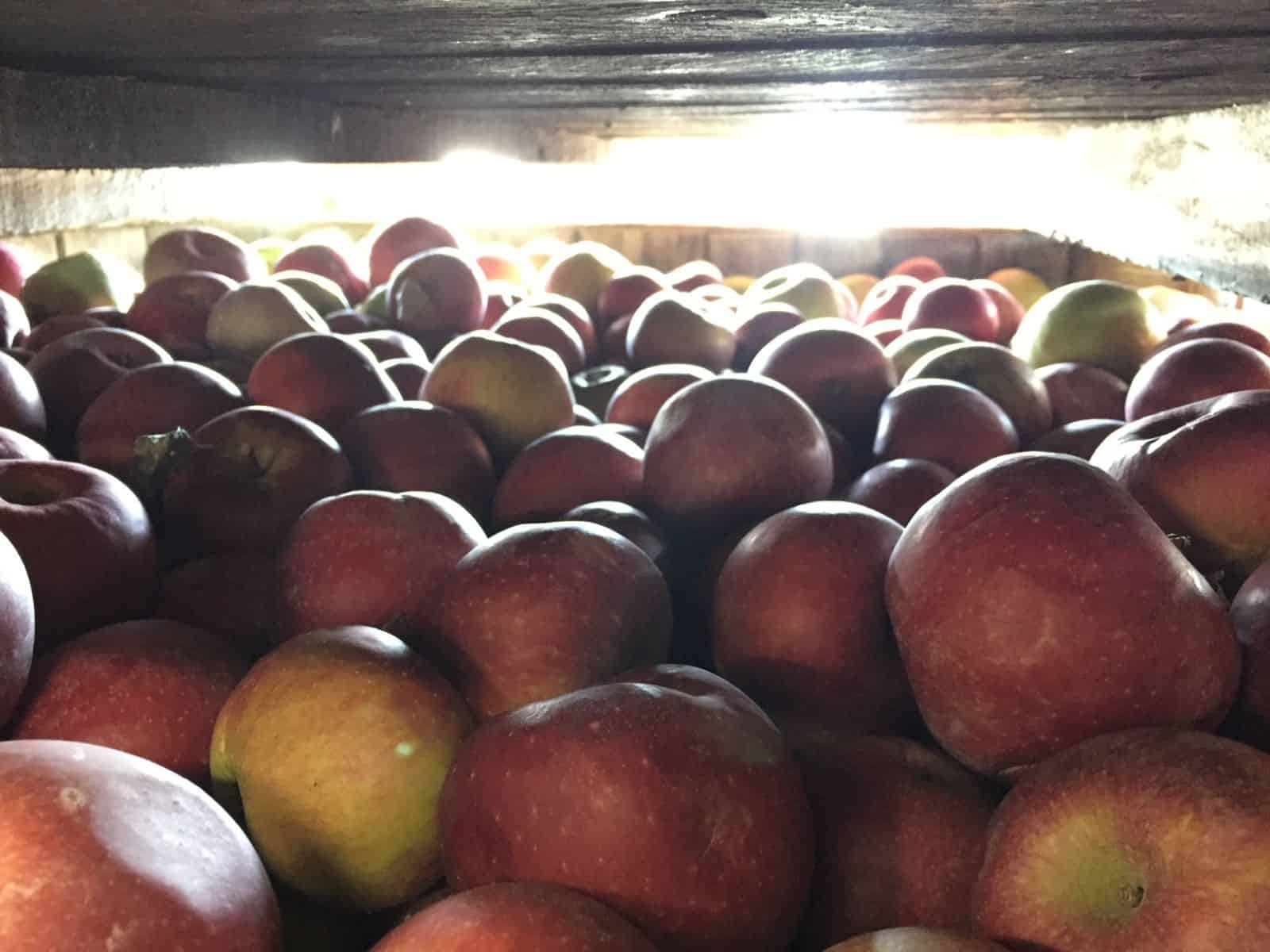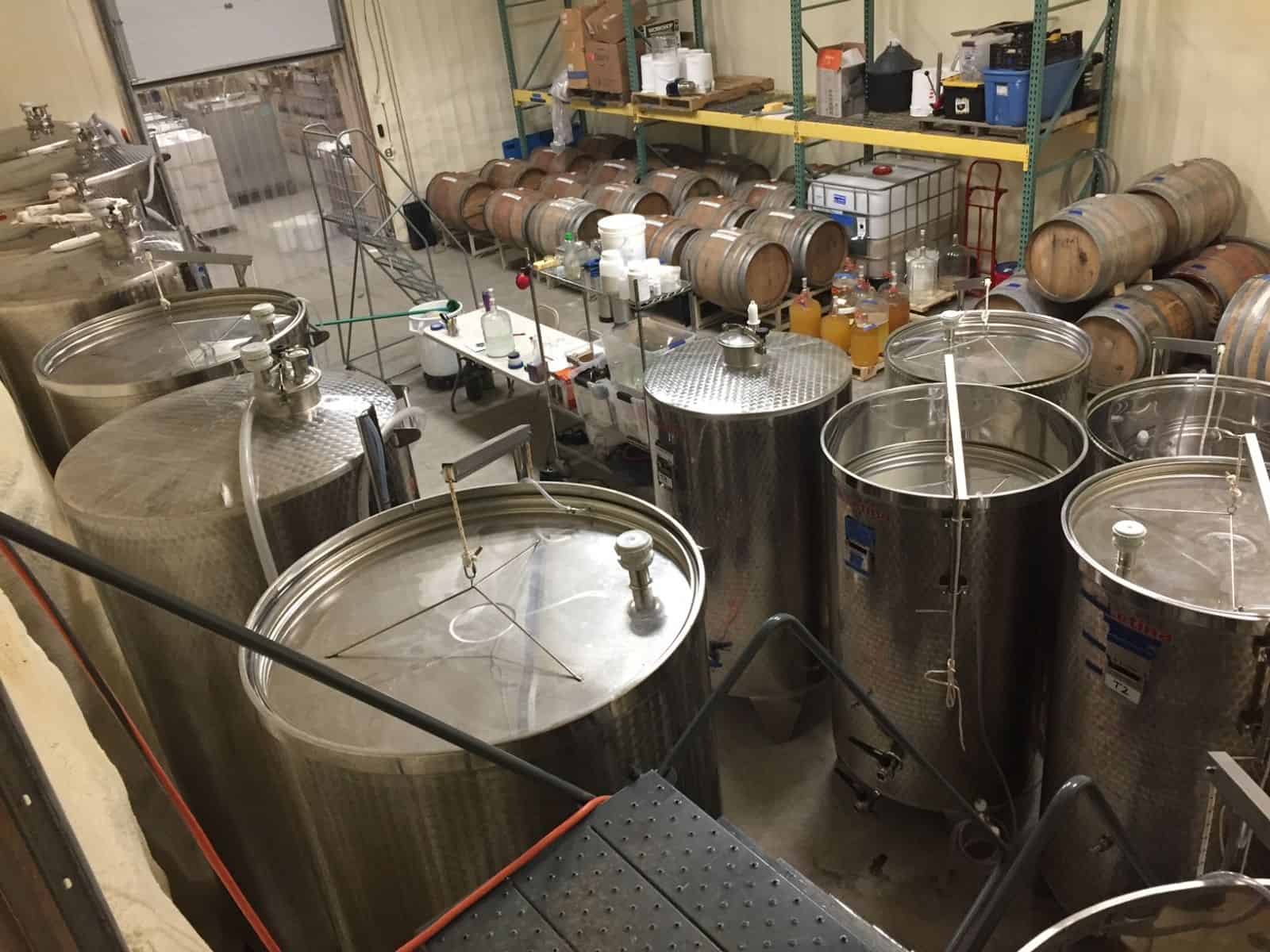Pop quiz: What is fermentation and how does it work? Even if you’re a devoted cider fan, it can be kind of hard to answer those questions point blank, right?
Don’t sweat it, y’all! Fermentation is one of those natural phenomena where — even if you totally grasp the basic principles — there is still a mysterious, almost mystical, element to it. Yeasts and bacteria eat sugar and convert that into alcohol and CO2. It sounds simple enough, but it really is a wild concept when you really think about it, and one that is responsible for basically all the delicious things in the world: cider, beer and wine, cheese, bread, pickles and even some coffee!
We wanted to dig a bit more into fermentation, because learning new stuff is the best. We enlisted the expertise of Chris Jackson, the head cidermaker at Treasury Cider, a farm cidery in upstate New York that produces lovely ciders made with apples grown at their family orchard, Fishkill Farms. Won’t you come along on this fizzy journey with us?

Cider Culture: Hi Chris! So, fermentation. Can you give us the most basic explanation of what fermentation is?
Chris Jackson: Essentially, fermentation is the act of yeast converting sugar into alcohol and carbon dioxide. You can pretty much just think of it as the yeast eating the sugar in the apple juice (in the case of cider) and the by-product of that consumption is alcohol and carbon dioxide. The yeasts will keep consuming the sugar until there is none left in the juice, and that is when you have what is referred to as completely “dry” beverage.
Does fermentation happen differently in cider vs. beer or other alcoholic beverages?
Well, yes and no. The act of fermentation is always going to be just as described above, but you will certainly get different results, based on what kind of yeast is doing the consuming, and what kind of sugar is being consumed. If you ferment the juice of the Roxbury Russet apple with commercial yeast versus native yeast, you’ll end up with two different ciders. Similarly, if you press a Chestnut Crab apple and ferment it, you’ll typically end up with considerably more tannins than if you press and ferment, say, a Golden Delicious apple.

Let’s talk about yeast! Cidermakers use different types of yeasts, right? Why do they choose one method versus another? What are the benefits/drawbacks to each?
Every cidery is going to be different. Some will depend solely on commercial yeasts, whereas others will rely only on native or wild fermentation, and, finally, some might use both approaches.
The types of commercial yeasts available to cidermakers are vast in number. Some cidermakers prefer champagne yeasts, others wine yeasts and some even like yeasts typically produced for beer. Honestly, as mentioned previously, all of them will consume sugar and produce alcohol, so it’s really a personal preference. I think a huge reason some cidermakers opt for commercial yeasts is consistency. These yeasts are produced in a lab and are made to give steady, reliable and consistent results.

Native yeasts are pretty much exactly what they sound like: yeasts that are native to your fruit and your location. At Fishkill Farms where I make Treasury Cider, we are lucky in that we grow our apples, press them and ferment them all on the same property, so the yeast that is on our fruit and in the air is truly native to our location.
The big benefit to native fermentation is that you get a cider that is truly unique to your location. There are so many types of the yeast on apples and in the air that no two locations will be the same. If you like the yeast that is native to your location, this can be a huge benefit, as it will be very hard for any other cidery to duplicate what you are doing and, of course, it is always nice to have a cider that is unique and unlike all the others.
What types of things can go wrong during fermentation? How does the cidermaker track what’s happening in the tank? How do you know when fermentation is over, or when you want to stop it?
Fermentation is really a game of “survival of the fittest” and the hope is always that the good yeasts win out. Sometimes there are some battles going on and bacteria and other less-desirable components can sneak in there and cause cider to go in an unwanted direction.
Without question, the best way to keep track of all of this is by tasting the cider often! That might seem like an obvious answer, but it is extremely important is that is often the first indication that something might be going wrong. The other important factors to consider and keep track of are pH (the acidity of the cider), specific gravity (the amount of sugar in the cider) and temperature.

Fermentation station at Treasury Cider
Watching your specific gravity is the best way to track when your fermentation is over (i.e., your cider is dry). When the specific gravity drops to 1.000, it is time to watch for additional changes. Some ciders will drop below 1.000 before finishing fermentation, so you do want to keep recording specific gravity even after it reaches 1.000, but once you hit a consistent number, that typically means the fermentation is done and there is no sugar left for the yeast to consume.
When you’re making a cider, do you have the targeted ABV in mind, or do you see what happens during fermentation? How do cider makers control the alcohol content in ciders?
At Treasury, we definitely do not approach any of our ciders with a targeted ABV in mind since we are big proponents of the native fermentation/let’s-see-what-happens approach! Alcohol content is directly correlated with the amount of sugar available to your yeast, so it can certainly vary quite a bit from year to year, based on the sugar in your apple crop. For example, if you have a particularly rainy season, your apples will end up more watery than you might like, which will result in less sugar available. If you take a natural approach to things, that will mean your cider will be a little lower in alcohol compared to other seasons where the weather was a little better, resulting in sweeter fruit.
Cidermakers can control that alcohol content mostly by controlling the starting sugar content. If your fruit is not as sweet as you would like, you can add sugar to the juice in whatever form you like and that additional sugar will result in additional alcohol being produced.
So, do different apples ferment differently?
Very much so, yes! I alluded to this in my answer about alcohol content, but you will see big differences based on the variety of apple, ripeness, the temperature at which you are fermenting, the yeast and so on. There are so many factors that come into play with cider, which is one of the many things that make it so interesting and unique. We can press one variety of apple into a barrel and another into a second barrel on the same date and ferment them in the same room, but they will often move at completely different rates. One might finish fermentation as quickly as a couple of weeks and the other might take more than a month. Even crazier than that, we can press the same variety into two barrels and they might act completely differently. This can be due to some of them being riper than others and have more sugar, some might have taken on more water and have less sugar, etc.

How does adding other ingredients change fermentation?
Again, this is really a question of yeasts and what some might prefer over others, but, as I stated at the start, yeasts will eat sugar. So, if you add another fruit in there along with your apples, you’ll have more sugar available. Additionally, any fruit or herb or whatever you want will also come in with native yeasts, so that can definitely change things up. Sometimes you can add something to a dry cider though that won’t really make a big difference as far as fermentation is concerned. One of the more popular offerings at Treasury Cider/Fishkill Farms is our Wild at Heart cider, which has local staghorn sumac steeped in the dry cider before bottling. The sumac brings a ton of flavor and color, but there’s no sugar really to speak of, so secondary fermentation doesn’t occur.
Wait … secondary fermentation? Yes, that’s going to have to wait for our second-level fermentation class! For now, we hope this intro to the concepts of fermentation was illuminating for you. And if the science-y stuff isn’t of interest, just remember: Fermentation is amazing! Without it, we’d all just be drinking apple juice.
- Photos: Treasury Cider